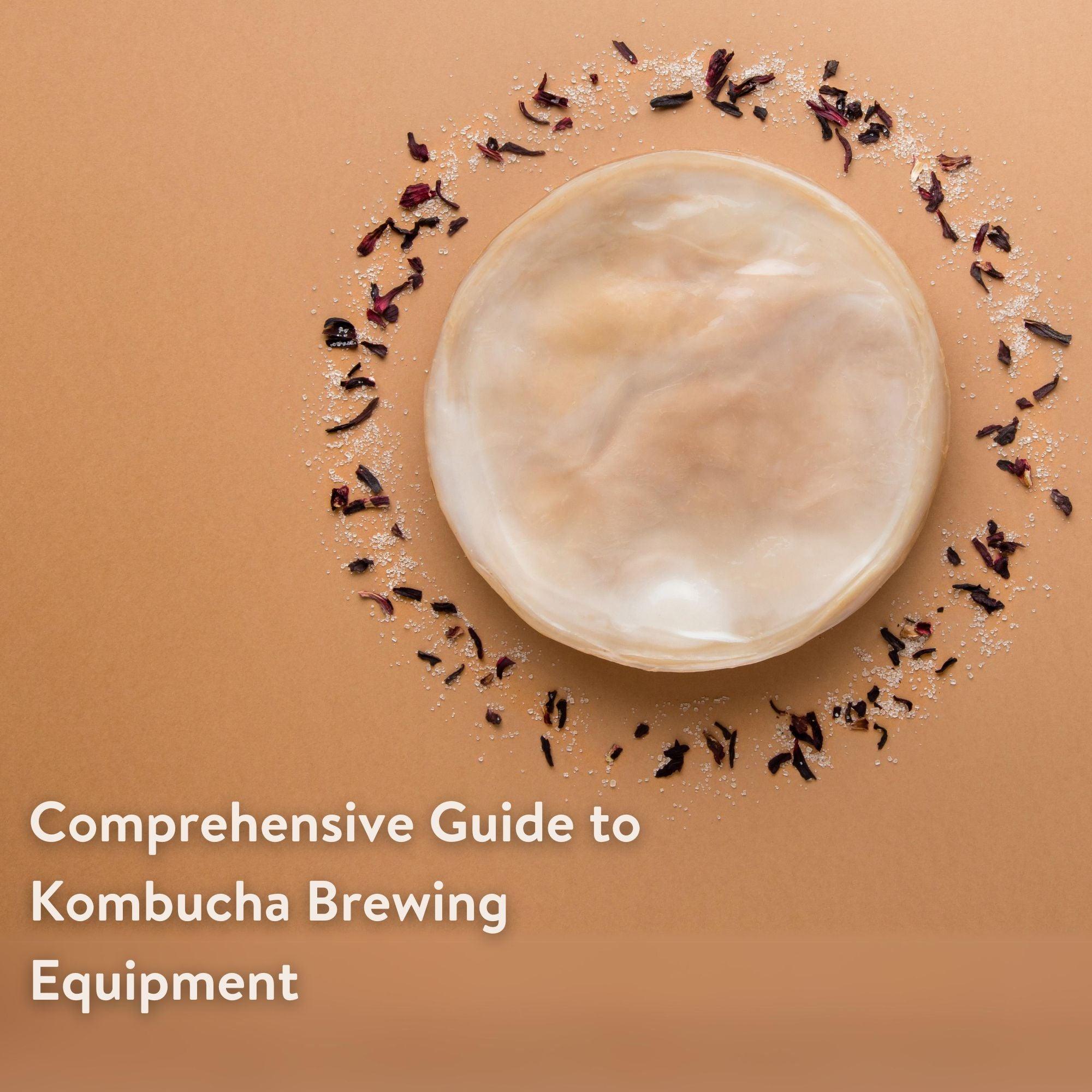The fermented tea beverage kombucha has been enjoyed around the world for many years. It is created by fermenting tea using a SCOBY, a symbiotic culture of bacteria and yeast that turns the tea's sugars into organic acids, enzymes, and vitamins. The immune system is supposedly strengthened, digestion is supposedly improved, and inflammation is supposedly reduced by kombucha. We will examine the many bacterial strains found in Kombucha in this post, along with any potential health advantages.
Kombucha contains the following bacterial strains:
-
Acetobacter: This microorganism is in charge of turning ethanol into acetic acid, which gives Kombucha its distinctively tart flavour. Moreover, Acetobacter is in charge of creating gluconic acid, which is thought to have a detoxifying effect on the body.
-
Gluconacetobacter: This bacteria generates acetic and gluconic acids, both of which are thought to have antibacterial characteristics.
-
Lactobacillus: This probiotic-rich bacteria is frequently present in foods that have undergone fermentation. Kombucha's tart flavour is due to the lactic acid that Bacteria creates. The immune system and digestion are thought to benefit from lactobacillus.
-
Pediococcus: Found frequently in fermented foods, this bacteria is also well-known for its probiotic qualities. Lactic acid, which Pediococcus generates, is thought to have antibacterial characteristics.
-
Brettanomyces: This yeast is in charge of causing fermentation to result in the production of alcohol. In addition to being employed in the creation of beer and wine, Brettanomyces is thought to possess antibacterial characteristics.
-
Saccharomyces: During the fermentation process, alcohol is also created by this yeast. In fermented foods, saccharomyces is frequently present and is thought to provide probiotic qualities.
-
Gluconacetobacter Kombuchae: An anaerobic strain of bacteria specific to kombucha is called Gluconacetobacter Kombuchae. It consumes the nitrogen present in tea to make acetic acid, gluconic acid, and the scoby mushroom.
- Zygosaccharomyces Kombuchaensis is a yeast strain that is unique to kombucha. It produces alcohol and carbonation as well as contributing to the mushroom body.
The health advantages of Kombucha have been the subject of numerous studies, some of which have shown conclusive results while others are still being looked at. These are a few of the health advantages of drinking kombucha:
-
Probiotic qualities: The presence of Lactobacillus and Pediococcus bacteria is thought to be responsible for Kombucha's probiotic qualities. By encouraging the growth of helpful bacteria and preventing the growth of bad bacteria, these bacteria are known to enhance gut health.
-
Antimicrobial properties: It has been demonstrated that the acetic acid and gluconic acids generated by the bacteria Acetobacter and Gluconacetobacter have antibacterial activities. E. coli, Salmonella, and Staphylococcus aureus are just a few of the hazardous bacteria that these acids can stop growing in.
-
Antioxidant qualities: Kombucha has many antioxidants that can guard the body against oxidative stress and damage brought on by free radicals. According to numerous studies, compared to other fermented drinks like kefir and yoghurt, kombucha has a higher antioxidant capacity.
- Anti-inflammatory characteristics: It has been established that organic acids created during fermentation, such as acetic acid and lactic acid, have anti-inflammatory qualities. These acids have the power to lessen bodily inflammation, which has been related to a number of chronic illnesses, including as diabetes, heart disease, and arthritis.
In conclusion, Kombucha is a fermented tea drink that has a variety of yeast and bacterial strains in it. These bacteria and yeast create organic acids, enzymes, and vitamins, all of which are thought to have a number of positive health effects. Certain advantages are known to exist, but others are still being researched. Nonetheless, Kombucha is generally regarded as safe for consumption and is a favourite beverage among fitness fanatics.
| Bacteria Strain | Potential Health Benefits | Citation |
| Acetobacter xylinum | Helps produce cellulose, which aids digestion and improves immune function | 1 |
| Acetobacter xylinoides | Increases the acidity level of Kombucha, which inhibits harmful bacteria | 2 |
| Gluconacetobacter kombuchae | Produces acetic acid, which can help regulate blood sugar levels and improve cholesterol levels | 3 |
| Gluconacetobacter xylinus | Helps to produce cellulose, which can improve digestion and strengthen the immune system | 4 |
| Lactobacillus acidophilus | Produces lactic acid, which helps to regulate the pH balance of the gut and supports healthy digestion | 5 |
| Lactobacillus delbrueckii | Helps to break down lactose and other sugars, making Kombucha easier to digest | 6 |
| Lactobacillus plantarum | Produces antimicrobial substances that help to fight harmful bacteria in the gut | 7 |
| Saccharomyces boulardii | Helps to prevent diarrhea and other digestive issues | 8 |
| Saccharomyces cerevisiae | May help to improve the immune system and protect against infections | 9 |
Sources:
-
Marsh AJ, O'Sullivan O, Hill C, et al. Sequence-based analysis of the bacterial and fungal compositions of multiple kombucha (tea fungus) samples. Food Microbiology. 2014;38:171-178.
-
Mayser P, Fromme S, Leitzmann C, Gründemann C, et al. The yeast spectrum of the ‘tea fungus Kombucha’. Mycoses. 2001;44(11-12):483-485.
-
Dufresne C, Farnworth E. Tea, Kombucha, and health: a review. Food Research International. 2000;33(6):409-421.
-
Vīna I, Semjonovs P, Linde R, Denina I. Microbiological study of kombucha fermentation. Journal of Biotechnology. 2010;150:S289.
-
Marsh AJ, O'Sullivan O, Hill C, et al. Sequence-based analysis of the bacterial and fungal compositions of multiple kombucha (tea fungus) samples. Food Microbiology. 2014;38:171-178.
-
Mayser P, Fromme S, Leitzmann C, Gründemann C, et al. The yeast spectrum of the ‘tea fungus Kombucha’. Mycoses. 2001;44(11-12):483-485.
-
Marsh AJ, O'Sullivan O, Hill C, et al. Sequence-based analysis of the bacterial and fungal compositions of multiple kombucha (tea fungus) samples. Food Microbiology. 2014;38:171-178.
-
Dibner JJ. The use of Saccharomyces boulardii in poultry production. Journal of Applied Poultry Research. 1996;5(4):413-418.
-
Marsh AJ, O'Sullivan O, Hill C, et al. Sequence-based analysis of the bacterial and fungal compositions of multiple kombucha (tea fungus) samples. Food Microbiology. 2014;38:171-178.


